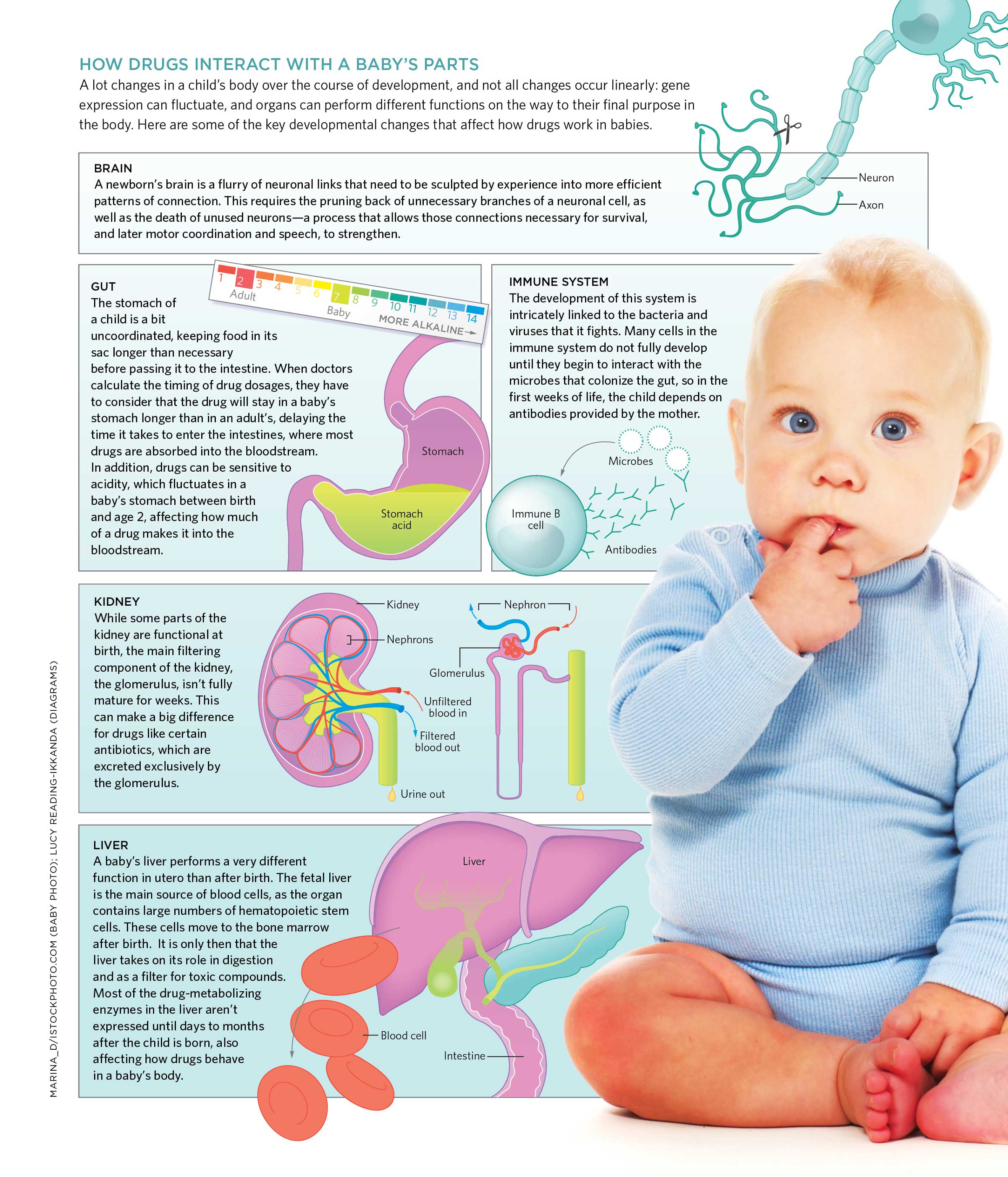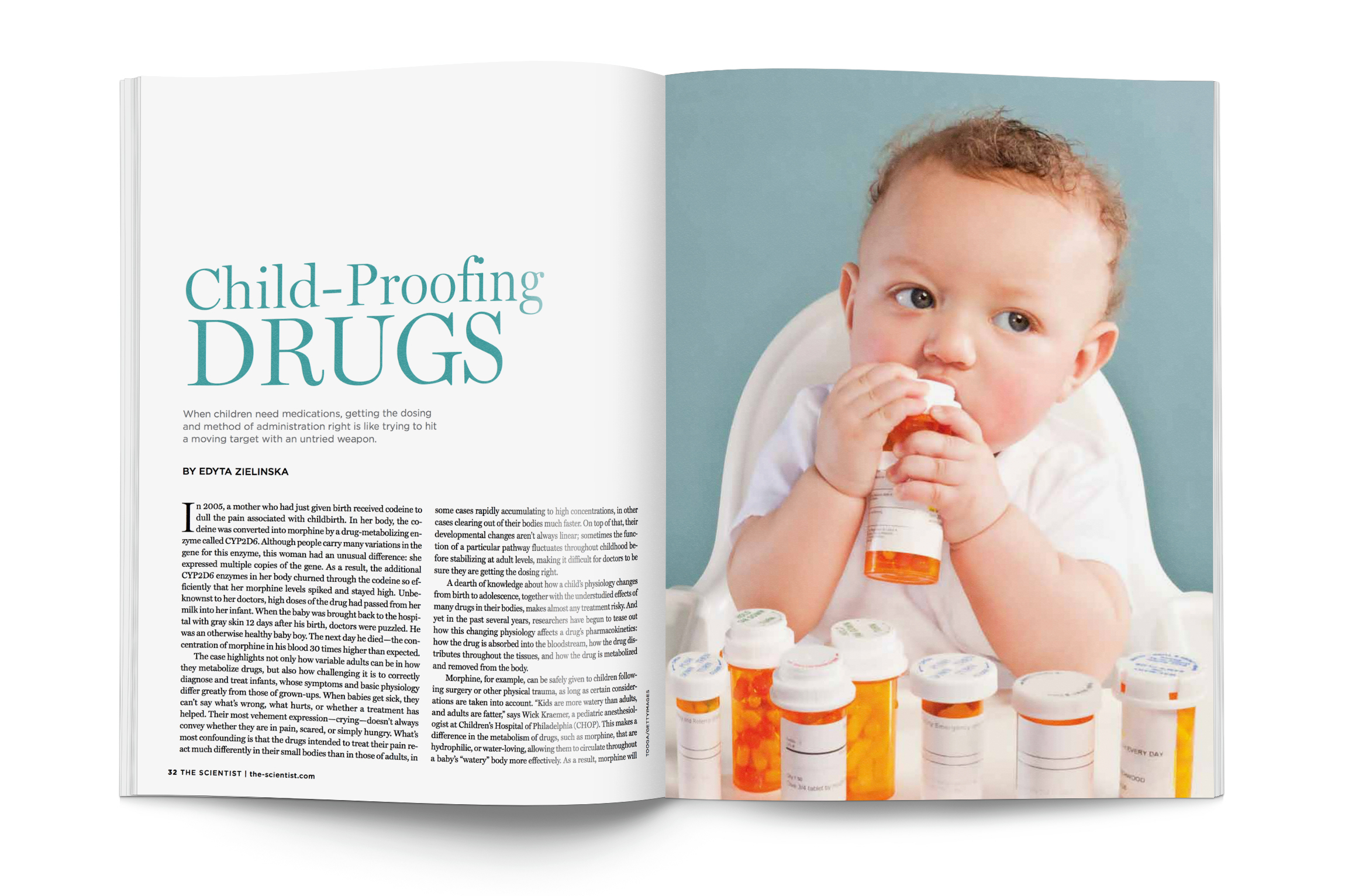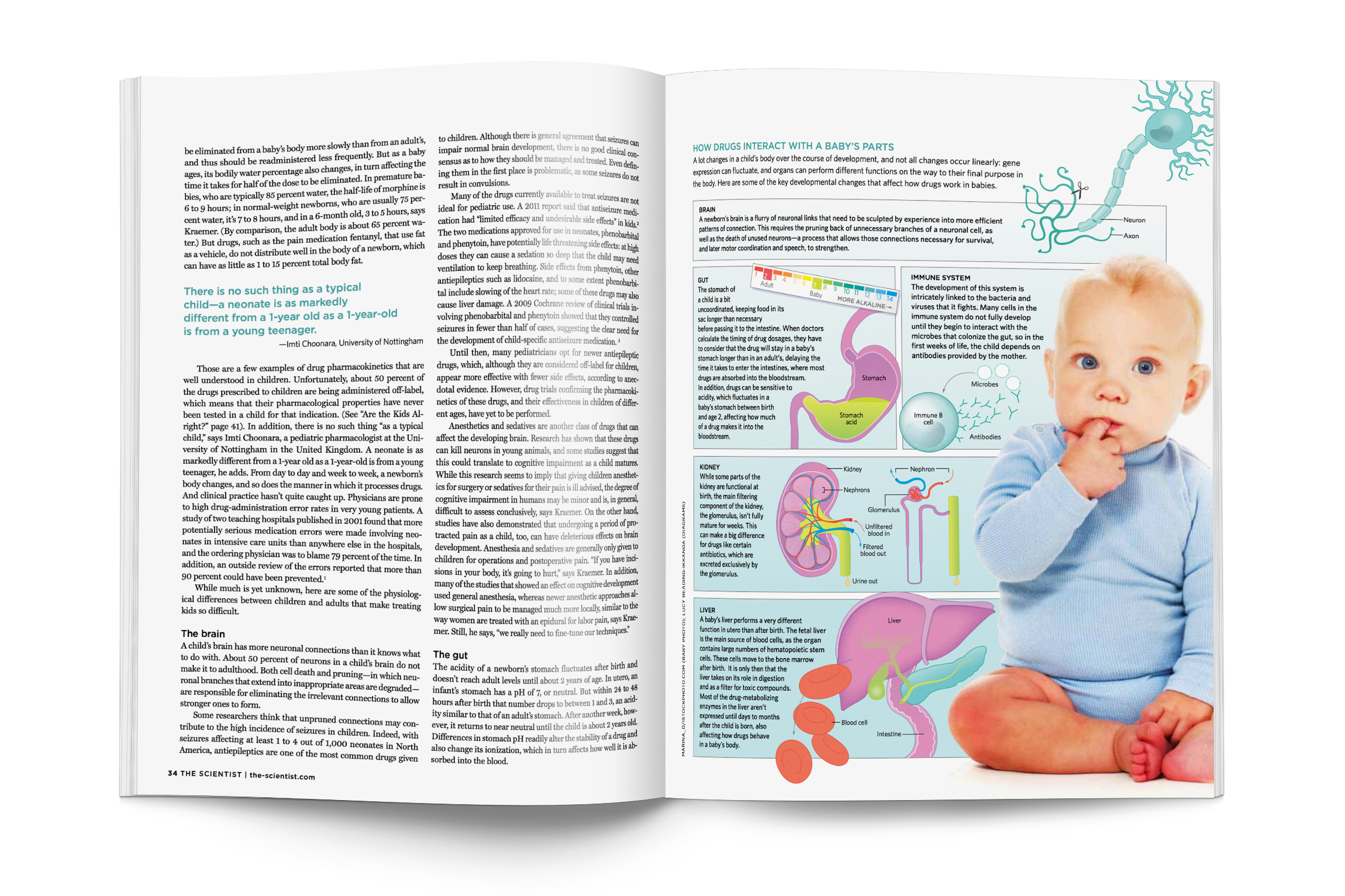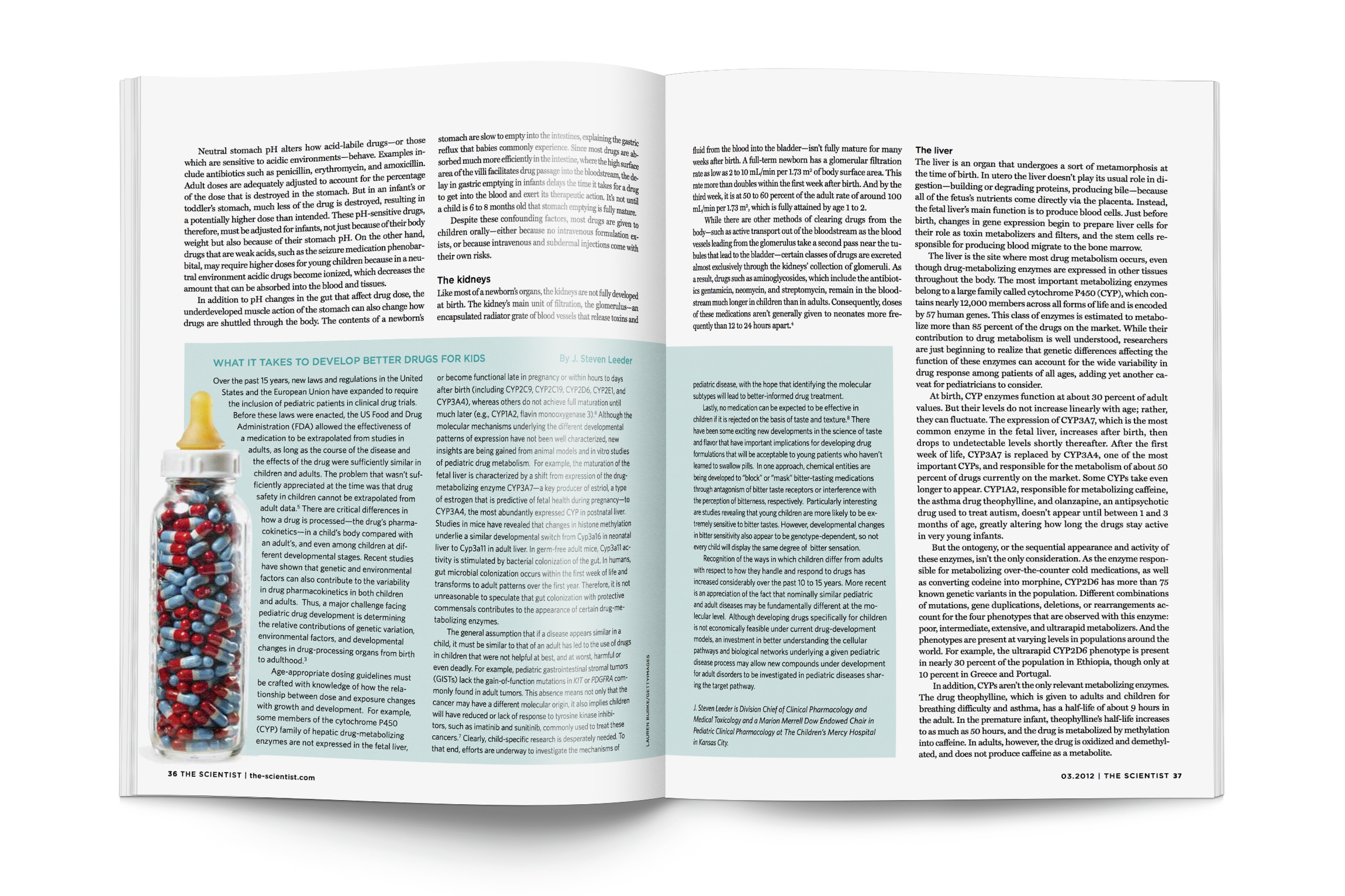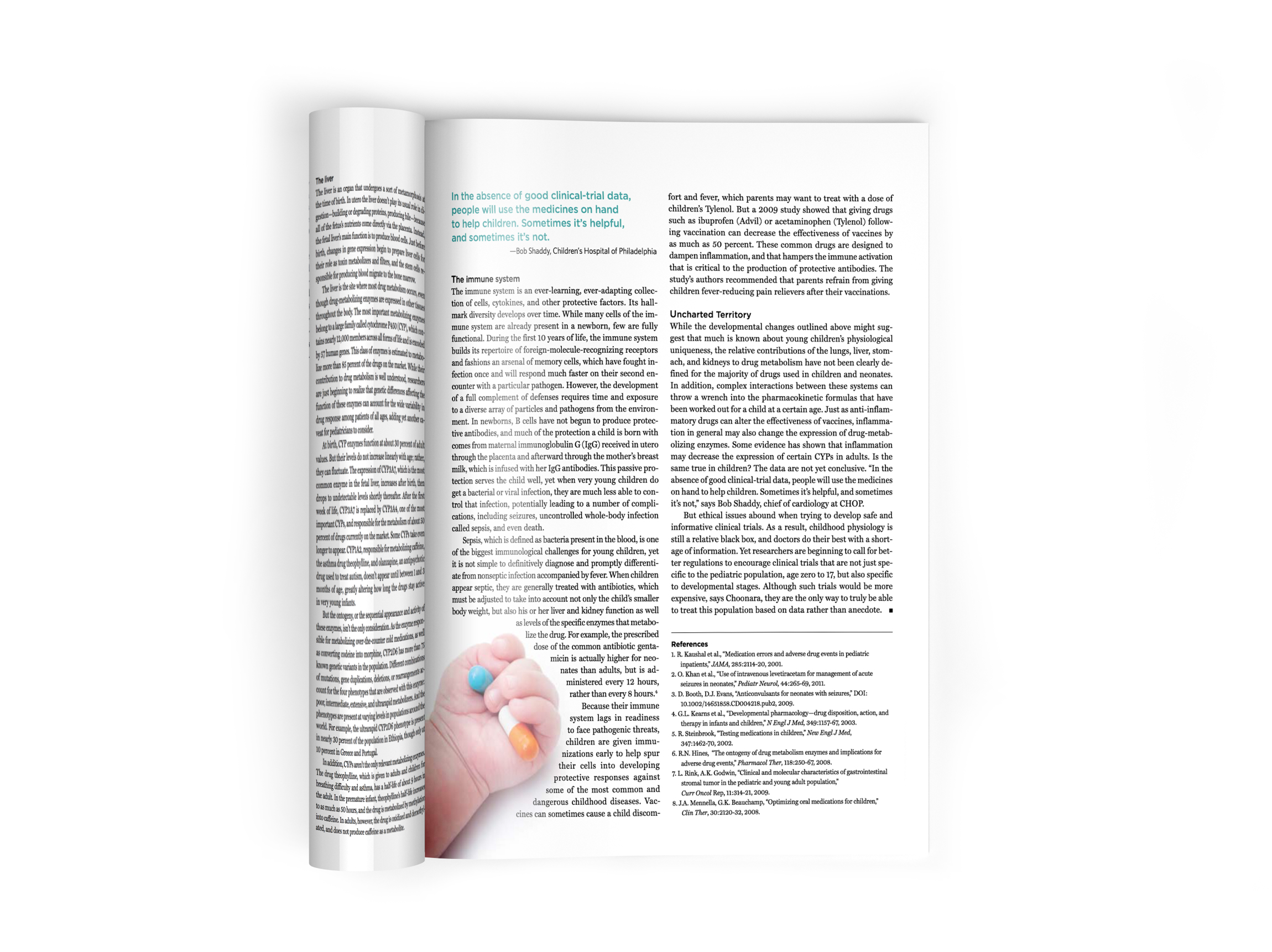Medicating children
When children need medications, getting the dosing and method of administration right is like trying to hit a moving target with an untried weapon. While much is known about young children’s physiological uniqueness, the relative contributions of the lungs, liver, stomach, and kidneys to drug metabolism have not been clearly defined for the majority of drugs used in children and neonates. In addition, complex interactions between these systems can throw a wrench into the pharmacokinetic formulas that have been worked out for a child at a certain age. Read the full article, here: Child Proofing Drugs.
Project: Infographic to present some of the key developmental changes that affect how drugs work in babies. Article design, layout and photo edit.
Client: The Scientist magazine
